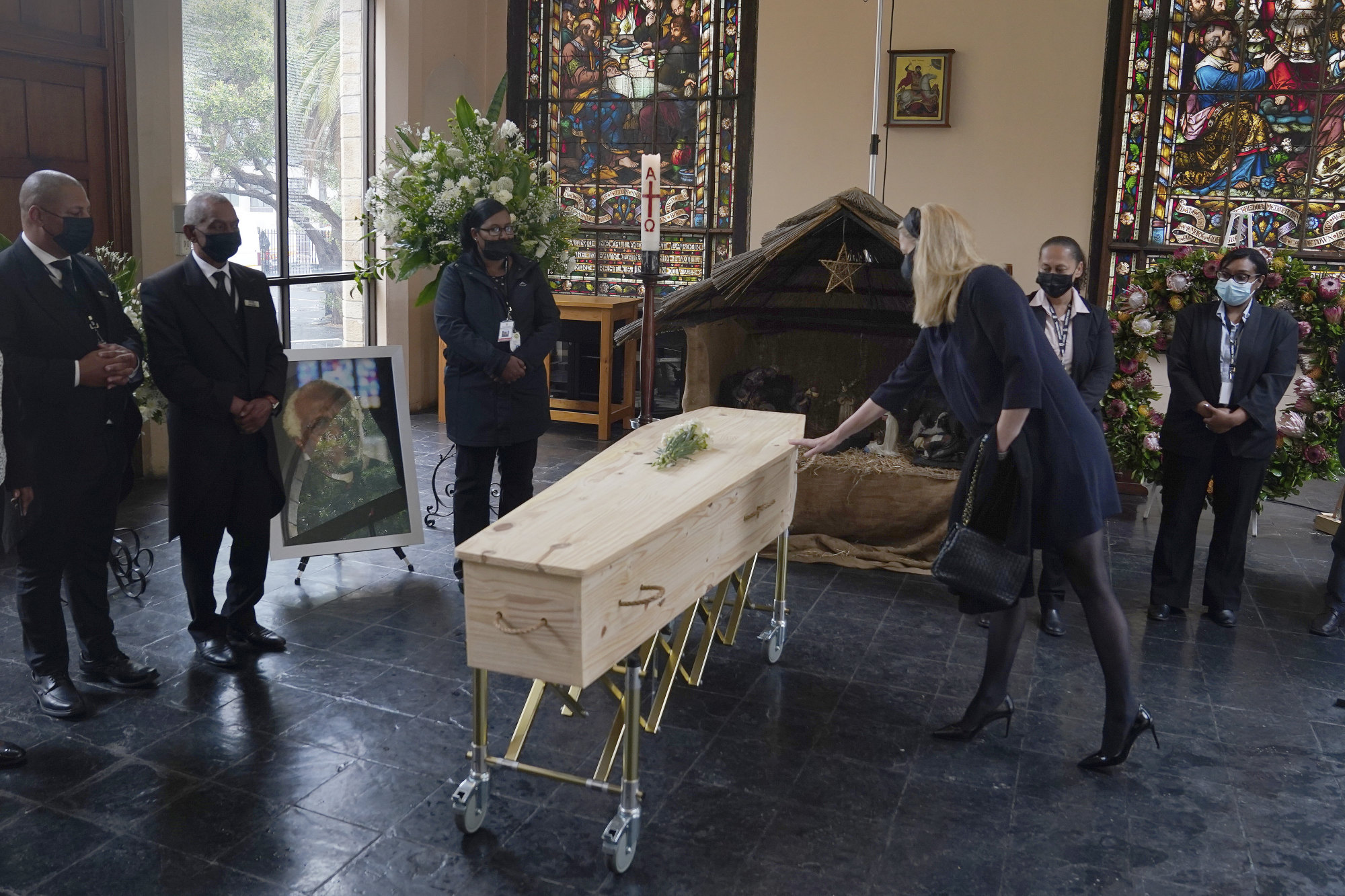
South Africa parliament blaze suspect charged with arson; fire now under control
- A 49-year-old man will appear in court on Tuesday charged with ‘housebreaking, arson and damaging state property’
- National assembly destroyed while fate of some of nation’s most cherished artefacts is unclear; 20 firefighters still on site
Flames broke out at around 5am on Sunday in the oldest wing of the Cape Town complex, triggering an inferno that crews battled throughout the day. The parliament is not currently in session because of the holidays, and no casualties were reported, but the damage was catastrophic.
“The fire was brought under control during the night,” spokesman Jermaine Carelse said, adding that around 20 firefighters were still on the site.
South Africa: major blaze at Cape Town parliament building
The blaze began in the wood-panelled older part of the building, a section that houses South Africa’s first parliament and some of the nation’s most cherished artefacts. It then spread to the neighbouring new assembly, where legislators meet.
Parliament spokesman Moloto Mothapo said the roof of the National Assembly had collapsed. “The entire chamber where the members sit... has burned down.”
Arson and negligence are both under investigation by the authorities. Cape Town’s security commissioner Jean-Pierre Smith said on Monday that he was “speechless” at how this could happen at the parliamentary complex. He referred to a massive gap in security.
The costs for rebuilding the historic structure is estimated at the equivalent of several hundred million dollars. “We’ll need hundred of millions, if not billions of rands,” Smith said.

He also spoke of serious deficiencies that could be due to poor maintenance. For example, he said, the electricity system had not switched off automatically and the ventilation systems had continued to run. Also, the automatic fire alarm had only been activated after a long delay.
Smith said the entire complex had suffered damage, both from the fire and the tonnes of water used to fight it. As for the roof of the building’s historic section, “it’s gone,” he said.
President Cyril Ramaphosa said on Sunday that a man had been held and that the building’s sprinkler systems had apparently failed.
The Hawks elite police unit said a 49-year-old man would appear in court on Tuesday, charged with “housebreaking, arson” and damaging state property.

The parliament’s presiding officers were to meet with Public Works Minister Patricia de Lille to take stock of the devastation.
Completed in 1884, the historic section is where Parliament keeps treasures including around 4,000 heritage and artworks, some dating back to the 17th century. The collection includes rare books and the original copy of the former Afrikaans national anthem “Die Stem van Suid-Afrika” (“The Voice of South Africa”), which was already damaged.
It also features a 120 metre-long Keiskamma tapestry, named after a river in the southeast of the country, that traces the history of South Africa from the first indigenous peoples, the San, to the historic democratic elections of 1994.

Smith said the temperature at the site of the fire was still around 100 degrees Celsius “making it difficult to fully determine the true extent of damages”.
Around 70 firefighters were deployed on Sunday, some using a crane to spray water on the blaze. Images broadcast on television showed giant flames leaping from the roof.
The area was quickly secured, with a cordon stretching to a square where flowers were still displayed in front of the nearby St. George’s Cathedral, where anti-apartheid icon Archbishop Desmond Tutu’s funeral took place on Saturday.

Cape Town has been home to South Africa’s houses of parliament since 1910, when separate administrations formed a union under British dominion and became a predecessor to the modern South African republic.
The site includes the National Assembly and the upper house National Council of Provinces, while the government is based in Pretoria.
It was in parliament where South Africa’s last apartheid-era president, FW de Klerk, announced in 1990 plans to dismantle white-minority rule.
The complex consists of three sections, with the newer additions constructed in the 1920s and 1980s.
In March another fire also broke out in the older wings of parliament, but it was quickly contained.
Cape Town suffered another major fire in April, when a blaze on the famed Table Mountain which overlooks the city spread, ravaging part of the University of Cape Town’s library holding a unique collection of African archives.

.png?itok=arIb17P0)

